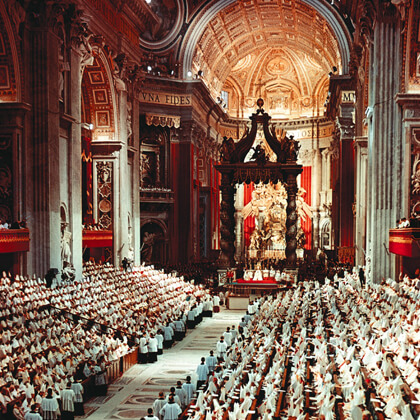Apostolic Pilgrimage
Perth, Australia ~ 30 November 1986

Perth, Australia ~ 30 November 1986
–“The presentation of Jesus in the temple shows him to be the firstborn Son who belongs to the Lord… Jesus is recognized as the long-expected Messiah, the ‘light to the nations’ and the ‘glory of Israel.’” (CCC 529). –“… for my eyes have seen your salvation, which you have prepared in the presence of all […]
~ from St. John Bosco: –“Act today in such a way that you need not blush tomorrow.” –“Forget the services you have rendered to others, but not those rendered to you.” –“Do not write anything offensive: scripta manent (writings remain).” –“All past persecutors of the Church are now no more, but the Church still lives […]
“Faith has to do with things that are not seen, and hope with things that are not in hand.” ~ St. Thomas Aquinas
MEETING WITH THE CLERGY ~ Warsaw Cathedral, 25 May 2006
*The Epistles of Paul give insight into the trusted friendship he had for disciples Timothy and Titus. –“I hope in the Lord Jesus to send Timothy to you soon, so that I may be cheered by news of you. I have no one like him, who will be genuinely anxious for your welfare. They all […]
“On that journey as I drew near to Damascus, about noon a great light from the sky suddenly shone around me. I fell to the ground and heard a voice saying to me, ‘Saul, Saul, why are you persecuting me?’ I replied, ‘Who are you, sir?’ And he said to me, ‘I am Jesus the […]
~ In his well-known classic, “Introduction to the Devout Life,” he writes to all Christians, not just those called to religious vocation: “It is an error, nay more, a very heresy, to seek to banish the devout life from the soldier’s guardroom, the mechanic’s workshop, the prince’s court, or the domestic hearth… there are various […]
“Almighty ever-living God, who choose what is weak in the world to confound the strong, mercifully grant, that we, who celebrate the heavenly birthday of your Martyr Saint Agnes, may follow her constancy in the faith. Through our Lord Jesus Christ.” ~ from the Proper of Saints, Daily Roman Missal
* Celebrated alongside St. Fabian is the Roman martyr, St. Sebastian. Although these two feasts are liturgically separate, they are venerated on the same day and also named together in the Litany of Saints. ~ St. Sebastian, a native of Milan, was an officer in Diocletian’s imperial guard. He converted to Christianity, whereupon he was […]